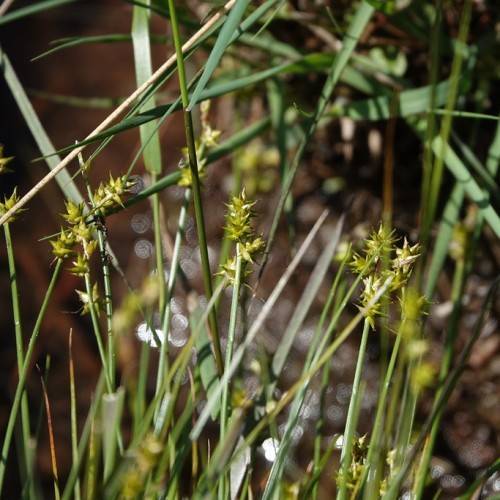
Little Prickly Sedge
Carex echinata
Also Known As - Star SedgeWatering:
Average
Hardiness Zone:
Flowers:
Flowers
Sun:
full sun
Leaf:
Yes
Growth Rate:
Low
Drought Tolerant:
Yes
Salt Tolerant:
Yes
Care Level:
Medium
watering
Narrow leaved sedge (Carex duriuscula) should be kept consistently moist, but not waterlogged. Water once a week during the growing season, usually Spring or Summer, ensuring the soil is sufficiently moist but not soggy. In the Fall and Winter, these plants may require less frequent watering as they go into a dormant state. Allow the soil to dry out a bit more between watering. Monitor the soil and if it feels dry, water the plant. Check for signs of withering and provide supplemental water if necessary.
sunlight
Narrow Leaved Sedge (Carex duriuscula) requires full sun to partial shade and should receive 6 to 8 hours of direct sunlight each day. Morning sun is preferable to afternoon sun, as intense afternoon sun can be too much for this species. When planted in hot climates, partial shade may be beneficial, especially during the hottest summer months when direct sunlight is more intense. Narrow Leaved Sedge tolerates light shade very well and may not bloom profusely in heavy shade.
pruning
In the spring, the plants should be cut back to approximately 6 inches in height and have the dead or diseased foliage removed. In late summer, you should deadhead the plants by removing the flower heads. This will help promote new growth and keep the plants looking tidy. Make sure to use a sharp pair of pruning shears when pruning, and always make sure to leave at least 1 set of leaves on each stem. Pruning should be done when the plant is actively growing in the spring and late summer for best results.
